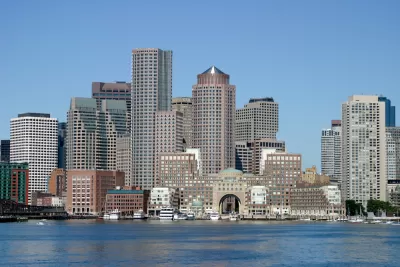When workers can't afford to live near jobs, the results are more than just housing cost burdens.

Dwyer Gunn takes a closer look at several recent and forthcoming research papers on increasing housing costs and the economic and job market effects. A new Urban Institute feature shows the outcome of spatial mismatch, where there are discrepancies between the location of workers and the location of employment opportunities, writes Gunn:
When rising rents drive workers to live too far from available jobs to apply for them, businesses and the economy suffer as well. It's not hard, after all, to imagine a coffee shop or restaurant that forgoes business, and economic growth, because it isn't able to hire the workers it needs to provide adequate customer service.
In urban areas where housing demand exceeds supply, developers would be expected to respond by producing more housing. However, this has not been the case, notes Gunn. "And while some regions do face geographic barriers (e.g. oceans) that can limit spaces to build new housing, most economists point to a policy choice—restrictive zoning and land-use regulations that effectively limit new building—as a significant driver of the housing-affordability crisis."
In addition to local and regional effects, research shows that these restrictions led to a 36 percent decrease in aggregate national growth between 1964 and 2009. And other research indicates that regulations have also resulted in fewer people relocating to high-productivity parts of the country, such as New York and California, which means economic growth is not resulting in the redistribution of people as it has in the past.
These findings suggest a strong need for zoning reform, transportation improvements that can decrease commute times, and better quality low-wage jobs, concludes Gunn.
FULL STORY: HIGH RENTS ARE STUNTING JOB-MARKET GROWTH

Alabama: Trump Terminates Settlements for Black Communities Harmed By Raw Sewage
Trump deemed the landmark civil rights agreement “illegal DEI and environmental justice policy.”

Planetizen Federal Action Tracker
A weekly monitor of how Trump’s orders and actions are impacting planners and planning in America.

The 120 Year Old Tiny Home Villages That Sheltered San Francisco’s Earthquake Refugees
More than a century ago, San Francisco mobilized to house thousands of residents displaced by the 1906 earthquake. Could their strategy offer a model for the present?

Ken Jennings Launches Transit Web Series
The Jeopardy champ wants you to ride public transit.

BLM To Rescind Public Lands Rule
The change will downgrade conservation, once again putting federal land at risk for mining and other extractive uses.

Indy Neighborhood Group Builds Temporary Multi-Use Path
Community members, aided in part by funding from the city, repurposed a vehicle lane to create a protected bike and pedestrian path for the summer season.
Urban Design for Planners 1: Software Tools
This six-course series explores essential urban design concepts using open source software and equips planners with the tools they need to participate fully in the urban design process.
Planning for Universal Design
Learn the tools for implementing Universal Design in planning regulations.
Clanton & Associates, Inc.
Jessamine County Fiscal Court
Institute for Housing and Urban Development Studies (IHS)
City of Grandview
Harvard GSD Executive Education
Toledo-Lucas County Plan Commissions
Salt Lake City
NYU Wagner Graduate School of Public Service





























